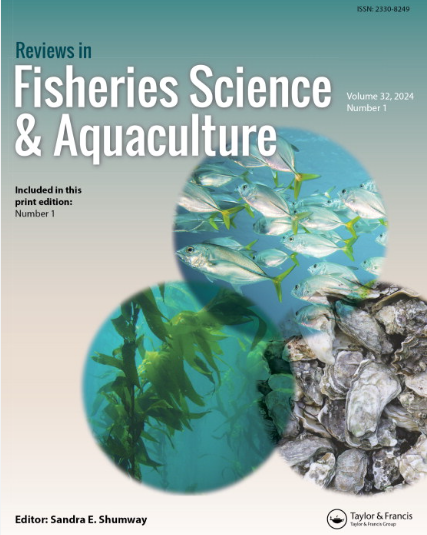2017–2019年美国海鲜零售概览
IF 6.4
1区 农林科学
Q1 FISHERIES
引用次数: 26
摘要
虽然大量的研究调查了各种市场的海鲜消费,但令人惊讶的是,人们对美国零售网点出售的海鲜类型或其产品形式知之甚少。对于新鲜海鲜来说尤其如此,新鲜海鲜通常被认为是海鲜中最有价值的产品形式。在这篇文章中,我们分析了一个关于零售海鲜销售的独特数据集,其中包括三种主要产品形式(新鲜、冷冻和货架稳定产品)的信息。新鲜海鲜很重要,因为它占销售收入的43%。此外,有些品种几乎只卖新鲜的,鳟鱼和龙虾就是最好的例子。新鲜也包括最大的物种多样性,因此,是新生产者最有可能成功的产品形式。全国销售由少数品种主导,鲑鱼和虾分别占生鲜类(27%)和冷冻类(43%)的很大一部分,金枪鱼占货架稳定类(75%)的主导地位。还有大量的品种,大部分市场份额很小。除了新英格兰的白鱼和路易斯安那州和德克萨斯州的小龙虾等明显的例外,主要物种的区域销售模式几乎没有差异。城市化程度和收入水平是推动海鲜销售的重要因素。本文的补充数据可在https://doi.org/10.1080/23308249.2021.1946481上在线获得本文章由计算机程序翻译,如有差异,请以英文原文为准。
An Overview of Retail Sales of Seafood in the USA, 2017–2019
Abstract While a large number of studies have investigated seafood consumption in various markets, surprisingly little is known about the types of seafood sold in retail outlets or their product forms in the USA. This is particularly true for fresh seafood, which is generally regarded as the most valuable product form of seafood. In this article, a unique dataset on retail in-store seafood sales that includes information about three main product forms (fresh, frozen, and shelf-stable products) was analyzed. Fresh seafood is important, as it makes up 43% of sales revenue. Moreover, some species are almost exclusively sold fresh, with trout and lobster as prime examples. Fresh also includes the greatest diversity of species and, as such, is the most likely product form for new producers to succeed. National sales are dominated by a few species, with salmon and shrimp accounting for a large portion of the fresh (27%) and frozen categories (43%), respectively, and tuna dominating the shelf-stable category (75%). There are also a large number of species with mostly small market shares. There are few differences in regional sales patterns for the main species, with notable exceptions such as whitefish in New England and crawfish in Louisiana and Texas. The degree of urbanization and income level appears as the important drivers for seafood sales. Supplemental data for this article is available online at https://doi.org/10.1080/23308249.2021.1946481
求助全文
通过发布文献求助,成功后即可免费获取论文全文。
去求助
来源期刊

Reviews in Fisheries Science & Aquaculture
FISHERIES-
CiteScore
25.20
自引率
0.90%
发文量
19
期刊介绍:
Reviews in Fisheries Science & Aquaculture provides an important forum for the publication of up-to-date reviews covering a broad range of subject areas including management, aquaculture, taxonomy, behavior, stock identification, genetics, nutrition, and physiology. Issues concerning finfish and aquatic invertebrates prized for their economic or recreational importance, their value as indicators of environmental health, or their natural beauty are addressed. An important resource that keeps you apprised of the latest changes in the field, each issue of Reviews in Fisheries Science & Aquaculture presents useful information to fisheries and aquaculture scientists in academia, state and federal natural resources agencies, and the private sector.
 求助内容:
求助内容: 应助结果提醒方式:
应助结果提醒方式:


